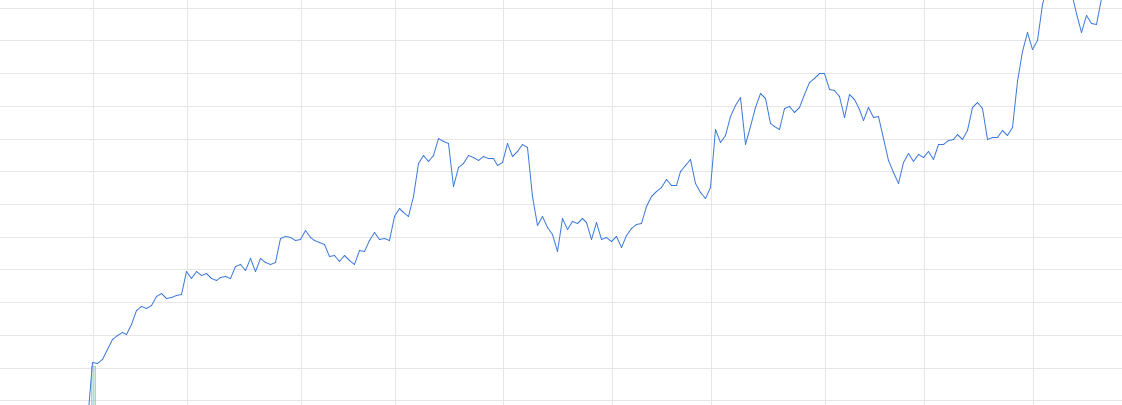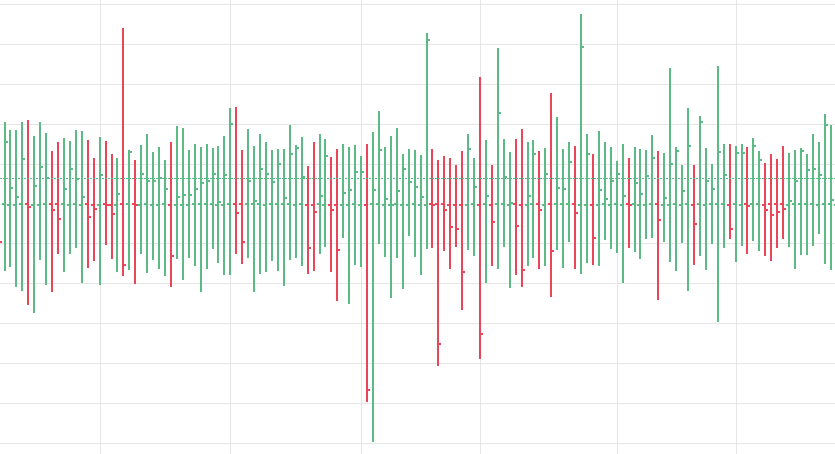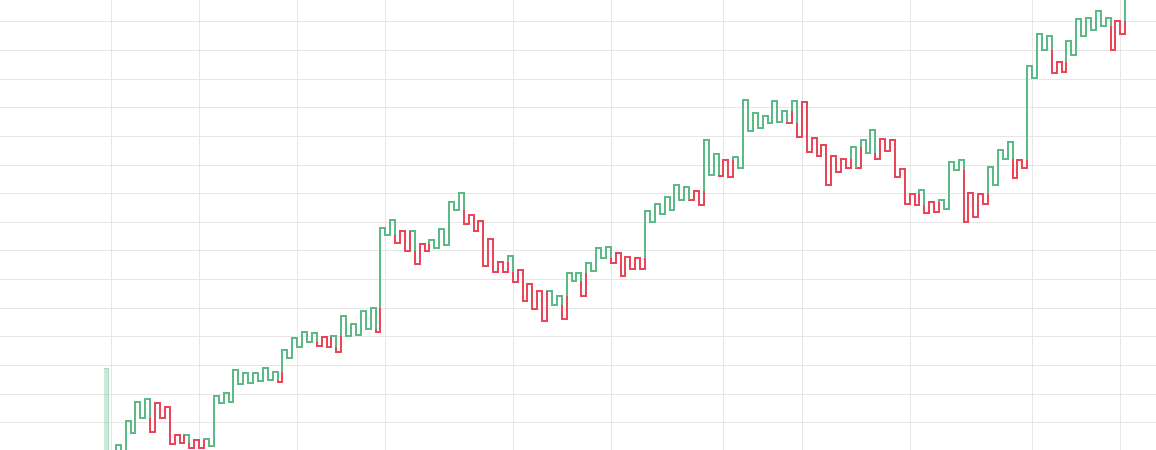Day trading charts are one of the most important tools in your trading arsenal. But understanding Renko from Heikin Ash, or judging the best time interval from 5 minutes, intraday or every test chart can be difficult. Here we explain charts for day trading, identify free charting products and hopefully trade without charts.
This page will break down the best trading charts for 2020, including bar charts, candlestick charts, and line charts. It will then offer guidance on how to set up and interpret your chart. Finally, you’ll get top tips on where to get the best and pay for charting software.
The Best Charts For Day Trading
There are several different day trading charts out there, from Heiken-Ashi and Renko charts to Magi and Chart charts. Your job is to find a chart that suits your individual trading style.
Each chart has its own benefits and drawbacks. However, day trading using candlestick and bar charts is very popular because they provide more information than a simple line chart.
Line Chart
One of the most popular intraday trading charts is the line chart. But, they will give you the closing price only. You will still select a time frame, but the chart will only display the closing price for that period, say five minutes for example.
Each closing price will be connected to the next closing price with a continuous line. Line charts are useful for cutting through the noise and offering a simple overview of where prices have been. However, you don’t want to base your trading decisions solely on this data because important information is missing.

Bar & Candlestick Charts
The most trading charts you see online will be bar and candlestick charts. They give you the most information, in an easy to follow format. Simply put, they show where the price has gone over a certain period of time.
The size of the bar/candle depends on the time frame you have chosen. Let’s say a price bar or candle is generated every five minutes. The bar and candlestick charts will show the price of the first transaction that occurred during the first five minutes, plus the highest and lowest transaction price during that period. In addition, you will also see the final (closing) price of the five-minute period.
You’ll find more tips on finding the best time intervals for daily trading charts below.
Bar Chart
A bar chart consists of vertical lines that represent the price range over a specific time period. The horizontal line represents the open and close prices. If the opening price is lower than the closing price, the line will usually be black, and red otherwise.
A bar chart is effectively an extension of a line chart, adding an open, high, low and close. They remain relatively easy to read, while giving you some important information line charts fail to do.

Mark it
Day trading with check charts is not common, but some traders swear by it. The bars on the check chart are developed based on a certain number of transactions. Therefore, the 415 tick chart creates a new bar every 415 transactions.
They allow you to set up your entries easily, hence why many claim scroll charts are best for day trading. They will not be affected by time, so in times of high trading activity you may have one bar form every minute, but in slow periods it may take several hours. This means that during periods of high volume, check charts will show you more important information than many other charts.

Candlestick chart
Heikin-Ashi
If you day trade, the heikin-ashi chart pdf will probably find your screen at some point. This candlestick chart originates from the 1700s from Japan.
So, why do people use it? Because they filter out a lot of unnecessary information, so you get a clear view of trends. This makes it suitable for beginners. But they are also useful for experienced traders. Heiken-ashi charts will help you in directional trades and make outright rejections.

Renko
If you want to ease yourself into day trading with charts, then consider Renko charts. ‘Renko’ comes from the Japanese word for brick, ‘renga’. A Renko chart will only show your price movements. You will not get time or volume indication.
Once the price exceeds the top or bottom of the previous brick, a new brick is placed in the next column. You will see white bricks when the trend is knocking up and black bricks when the trend is down. They are especially useful for identifying key support and resistance levels.
Kagi
All a Kagi chart needs is a reversal amount that you specify in percentage or price change. Then, when the price turns in the opposite direction of the predetermined reversal amount, the chart changes direction.
You will see different line widths in the Kagi chart. If the market gets higher than the previous swing, the line will thicken. Likewise, when the head is below the previous swing the line will be thin.
Kagi charts are good for day trading because they emphasize breaking highs and lows. It is also great for finding support and resistance levels, allowing you to spot market trends.

Time Preparation
Online you will see many 1, 5, 15 and 30 minute day trading charts. All chart types have a time frame, usually the x-axis, and that will determine the amount of trading information they display.
While most are based on time, some will focus on the number of trades. The most common are:
- Time
- Mark it
- Trade volume
- Price range
The 5-minute chart is an example of a time-based timeframe. Every 5 minutes a new price bar will show you the price movement for 5 minutes. Any number of transactions can appear during that time frame, from hundreds to thousands.
Part of setting up your day trading chart involves determining time intervals. If you don’t plan to be glued to your screen all day, you might want to use a lower time frame. If you plan to be there for a long time, perhaps a higher time frame will suit you better.
This is simply because if you trade only in a few hours, the 15-minute chart will only create a limited number of bars. No matter how good your charting software is, it will struggle to produce useful signals with that limited information.
There is another reason you should consider timing in your chart setup for day trading – technical indicators. Not all indicators work the same on all time frames. You may find that lagging indicators, such as moving averages work best with less volatility. You may benefit from a long-term moving average on your daily chart, than if you use the same setup on a 1-minute chart.
There is no right or wrong answer when it comes to time frames. Keep in mind when you read charts for day trading, first, how long are you on your screen, waiting for a signal to show up? Second, what is the time frame that will be the technical indicator that you use as best as possible?
Understanding Day Trading Charts
So, you have prepared your chart. But, now you need to get to grips with day trading chart analysis. There’s no use having a chart with all the answers if you can’t interpret the lines, ticks, and bars to get your hands on them.
Technical Indicators
Add too many pointers and you’ll be left with a sea of colors and lines that will only slow down the decision-making process. Many make the mistake of avoiding their charts and not being able to interpret all the data. Instead, consider some of the most popular indicators:
- Volume indicator – It won’t tell you how the price is going, however, it will tell you if there are a large number of transactions being made, and whether big players are in the game.
- Simple moving average (SMA) – The 10-year moving average is one of the most common indicators among intraday traders. It will highlight early significant price moves and show you which direction. Choose slow moving averages and you may lose profits when the trend ends or reverses.
- Average true range (ATR) – This paints an accurate picture of volatility based on the instrument’s actual price. This gives you no choice but to evaluate each security individually. This helps ensure the right trading decisions are made.
- Oscillators – These are a group of indicators that usually flow between upper and lower bounds. They are useful when trends are not clearly visible. The most popular are RSI, MACD, and Commodity Channel Index (CCI).
Chart Patterns
With thousands of trading opportunities on your chart, how do you know when to enter and exit a position? You need to see the best trading patterns of the day. Patterns are great because they help you predict future price movements. They work on the basis that, ‘history repeats itself’.
Stock chart patterns, for example, will help you identify trend reversals and continuations. You will typically find two themes in your chart analysis, retracements and reversals. The first is when the price clears the predetermined level on your chart. The last is when there is a change in the direction of the price trend.
Some of the most popular patterns are listed below.
- Morning consolidation
- Late consolidation
- There are no price withdrawals
- Spring on support
- Bars are outside at resistance or support
- Pennants
- Cup and holder
- Ascending triangle
- Descending triangle
- Bottom three
- Head and shoulders
You can also find breakdowns of popular patterns, along with easy-to-follow images.
Software
You can get a variety of charting software, from day trading applications to web-based platforms. Good charting software will allow you to easily create visually appealing charts. You should also have all the technical analysis and tools just a few clicks away.
Most brokerages offer charting software, but some traders opt for additional, specialized software. If you are new to day trading using charts then the standard software you get from your broker should cut the mustard.
All popular charting software below offer line, bar and candlestick charts. They also offer wide customisability options:
- MetaTrader – It is suitable if you are looking for daily forex charts. Trading with MetaTrader offers in-depth and easy-to-navigate charts. You also get plenty of time frames to choose between.
- eSignal – eSignal offers extensive customization, but a relatively limited technical selection. It is suitable for beginners who want to familiarize themselves with trading charts.
- NinjaTrader – This inexpensive integrated trading and charting software system offers clear charts in every format under the sun. You will also benefit from useful research tools and trading simulators.
- Sierra Chart – This trading platform not only offers charts for easy setup, but you also get extensive technical analysis tools. It also offers a demo account, plus real-time and historical data.
- TradeStation – You benefit from chart flexibility and a variety of data. In addition, you get access to hints with gestures and some smart drawing tools.
If you want free statistics software, consider more ample examples in the next section.
Free Charts
The good news is that there are many free day trading charts. You get most of the indicators and technical analysis tools you would pay for live charts. You will also find some free options offer space for traders to follow experienced traders, and discuss instruments and markets with each other.
This free charting site is an ideal place for beginners to find their feet, offering you top tips on reading charts. Some will even offer a demo account. This gives you the opportunity to trade with simulated money first when you find the rope. They are great for trying out a variety of different charts until you find the right one to compliment your trading style.
Among the most popular free online trading charts are:
- Technician – You will get real day charts for all US equity and forex markets. In addition, you will get delayed data from world stock exchanges and futures markets.
- TradingView – You will get real time stock charts on 1, 3, 5 and 15 minute time frames. You can also get forex and bitcoin charts, while pending futures data. You’ll get access to hundreds of technical indicators and the ability to set up watch lists and alerts.
- FreeStockCharts – You get trading charts for crypto, futures, stocks and all other major markets. You will receive time frames of 1, 2, 3, 5, 10 and 15 minutes to choose between. You can keep a portfolio, create various chart layouts and benefit from various technical indicators and drawing tools.
Main topic
This page has explained trading charts in detail. Therefore, you should know, today trading without a chart is missing out on a lot of useful information. Used correctly charts can help you explore past price data to help you better predict future changes. There are many statistical software out there, including some free options. Look for charts with generous customisability options, which offer a variety of technical tools to allow you to identify explanatory patterns.







